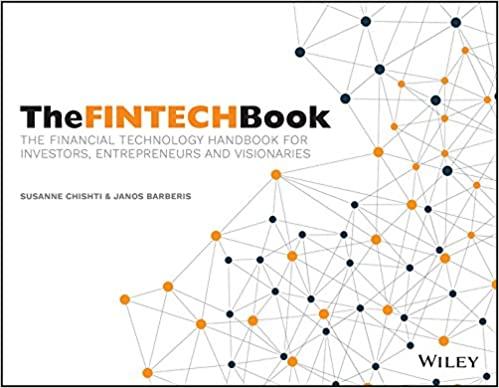Question
MINICASE: MKTG - 23 BUSINESS ETHICS PROGRAM Green Earth Topic: Pricing (Price vs. Value), Advertising (Deceptive) Characters: Carol Meyers, Director of Membership at Green Earth
MINICASE: MKTG - 23 BUSINESS ETHICS PROGRAM
Green Earth
Topic: Pricing (Price vs. Value), Advertising (Deceptive)
Characters: Carol Meyers, Director of Membership at Green Earth
Jeffrey Smith, Staff person in Membership Renewal Department Stella Latham, Director of Fund Raising at Green Earth
After graduating from college, Carol Meyers, a concerned environmentalist, was very pleased to get a position at Green Earth, a large nonprofit organization dedicated to restoring the earths ecology. After doing very well in a variety of positions in the membership division, Carol was promoted six months ago to Director of Membership. Her responsibilities include supervising the new membership campaign, a concerted effort that takes place around July of each year.
One day in February, Carol gets a call from Jeffrey Smith in the Membership Renewal Department. Jeffrey says he has received a letter of complaint from a member who received a regular renewal notice. When Carol reads the letter, she learns that when she sends out her direct mail advertising for new memberships in the summer, those who respond and become members gain a membership only for that calendar year. In December, these new members receive renewal notices for the following months. Carol checks the wording of the letter sent to potential members, which has been used for the last several years, and finds no mention of the calendar year as the basis for the years membership.
Carol takes the letter of complaint to her supervisor, Stella Latham, who is Director of Fund Raising. Stella reads the letter and says to Carol, Look, Carol, Green Earth is one of the most successful environmentalist groups in the world. Sure, the first years membership is not quite a full year. But it is much easier to send out renewal notices at the beginning of the year to everyone. It saves a lot of record keeping, and therefore a lot of money. Think of the good we do for the environment with that money. Also, by having a short first-year membership, we save money on our quarterly newsletter-most members just get one or two issues. That money goes for good causes. And members dont mind--if they even notice. This is the first complaint weve received in the eight years Ive been here. When Carol suggests postponing the new membership drive until November so that new memberships can start at the beginning of the calendar year, Stella responds People dont think about the environment in Novembertheyre thinking about Thanksgiving dinner and spending money on Christmas gifts. Theyre spending their time indoors. We have found that in the summer, people are outdoors, enjoying the environment. They are more sensitive to and concerned about environmental issues. We get a much better response rate in the summer than at the end of the year. And the greater the membership, the more we can do for the environment.
Carol must decide what actions, if any, to take. After all, as Director of Membership, she is responsible for decisions regarding new memberships and renewal of memberships. She is, however, evaluated on the revenues she brings in. And it is all for a good cause.
Author: Judy Cohen, Assistant Professor of Marketing, Rider College
questions:
- Select the best alternative. Evaluate each alternative in light of the available information. If you have carefully taken the proceeding steps, a good solution to the case should be apparent. Resist the temptation to jump to this step early in the case analysis. You will probably miss important facts, misunderstand the problem, or skip what may be the best alternative solution. You will also need to explain the logic you used to choose one alternative and reject the others.
Evaluation of Alternatives If you have done the above properly, this should be straightforward. You measure the alternatives against each key decision criteria. Often you can set up a simple table with key decision criteria as columns and alternatives as rows, and write this section based on the table. Each alternative must be compared to each criteria and its suitability ranked in some way, such as met/not met, or in relation to the other alternatives, such as better than, or highest. This will be important to selecting an alternative. Another method that can be used is to list the advantages and disadvantages (pros/cons) of each alternative, and then discussing the short and long term implications of choosing each. Note that this implies that you have already predicted the most likely outcome of each of the alternatives. Some students find it helpful to consider three different levels of outcome, such as best, worst, and most likely, as another way of evaluating alternatives. Develop/recommend an implementation plan. The final step in the analysis is to develop a plan for effective implementation of your decision. Lack of an implementation plan even for a very good decision can lead to disaster for a firm and for you. Don't overlook this step. Your teacher will surely ask you or someone in the class to explain how to implement the decision. Business people are decision-makers; this is your opportunity to practice making decisions, provide justifications and resolve the defined problem.
Step by Step Solution
There are 3 Steps involved in it
Step: 1

Get Instant Access to Expert-Tailored Solutions
See step-by-step solutions with expert insights and AI powered tools for academic success
Step: 2

Step: 3

Ace Your Homework with AI
Get the answers you need in no time with our AI-driven, step-by-step assistance
Get Started


